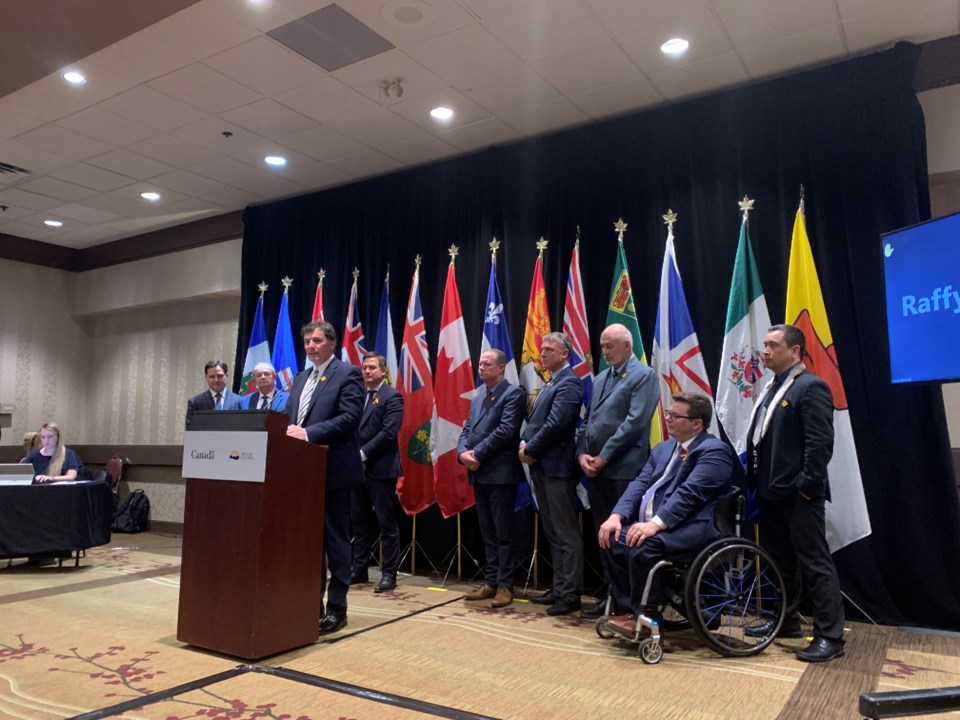In the most recent census, Whistler, Squamish and Pemberton experienced some of the highest population growth rates in the province, with Pemberton being the fastest-growing village in B.C.
In Whistler, officials are working hard on what they’re calling the Balance Model Initiative, which seeks to achieve a balanced future for the resort amidst projections of possible runaway growth.
And yet, these communities are not alone in their experiences, with smaller municipalities across the country experiencing similar challenges with rapid growth as Canada’s population passes 40 million for the first time ever.
It was against this background that Canadian infrastructure ministers, both federal and provincial, met in Whistler on June 21 to discuss challenges facing the nation, where funding is needed, and how to adapt to the effects of climate change.
“My colleagues in the House of Commons from British Columbia have talked to me about very specific examples in Whistler and the surrounding communities … and as we look at the next generation of federal infrastructure programs, we very much want to ensure that we’re responding to [growth pressures],” said Dominic LeBlanc, federal Minister of Intergovernmental Affairs, Infrastructure and Communities, at a press conference after the meeting.
The solutions to a big transit project in a large urban centre in Canada are different from those in smaller, rural centres, LeBlanc noted.
“Many of these policies are intertwined,” he said. “If you want to expand the availability of affordable housing, you need to think of things like green infrastructure projects, water and wastewater projects, but it also includes things like rural roads, which for us is going to be a priority.
“The Government of Canada should partner with provinces that are facing pressure on some of that basic infrastructure, too.”
As it relates to increasing active transportation and reducing congestion, provincial Minister of Transportation and Infrastructure Rob Fleming said the province is “working closely” with Whistler’s mayor and council on how to better move people around the resort.
“Whistler has some areas that have to do with its congestion that are under study by the Ministry of Transportation and Infrastructure,” Fleming said.
“This community is a great example of the challenges we face around the country where we’re bringing solutions, sometimes not fast enough, to the table, and we’re assessing what the infrastructure needs are like for a growing community.”
In Whistler and the Sea to Sky, one of the main infrastructure asks from local leaders is a regional transit service connecting Mount Currie to the Lower Mainland—a project Fleming acknowledged is “in process.”
“We continue to look at inter-community links, as well as the private operators that are doing trips—there’s four companies basically getting from Vancouver up and down the corridor—so it’s both a public and private approach to creating transportation options that don’t involve having to travel by private vehicle,” Fleming said.
The minister also touted the province’s record on supporting transit in comparison to other provinces.
“A lot of provinces ran out of money or chose not to fund transit’s full recovery from COVID,” he said. “We’re maintaining and expanding service levels and being patient with ridership recovery, because we want to come out of full recovery from the pandemic with a better transit system, not one that’s been knocked back 10 years.”
So, no announcement on regional transit for the Sea to Sky?
“We’ll have more to say when we get closer, but we have a very active dialogue in our communities here,” Fleming said.
“So you’re asking about something that’s in process. I don’t have a scoop for you today, but we know the aspirations of these communities to have a better-coordinated regional transit system.”




